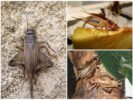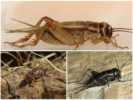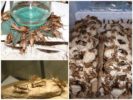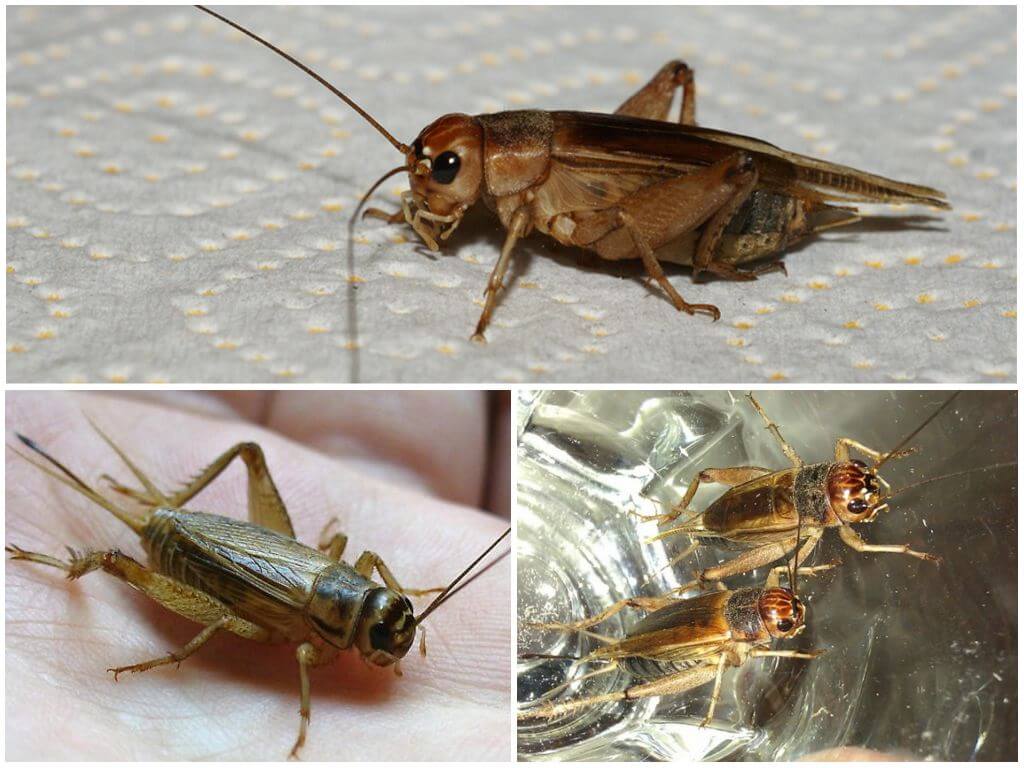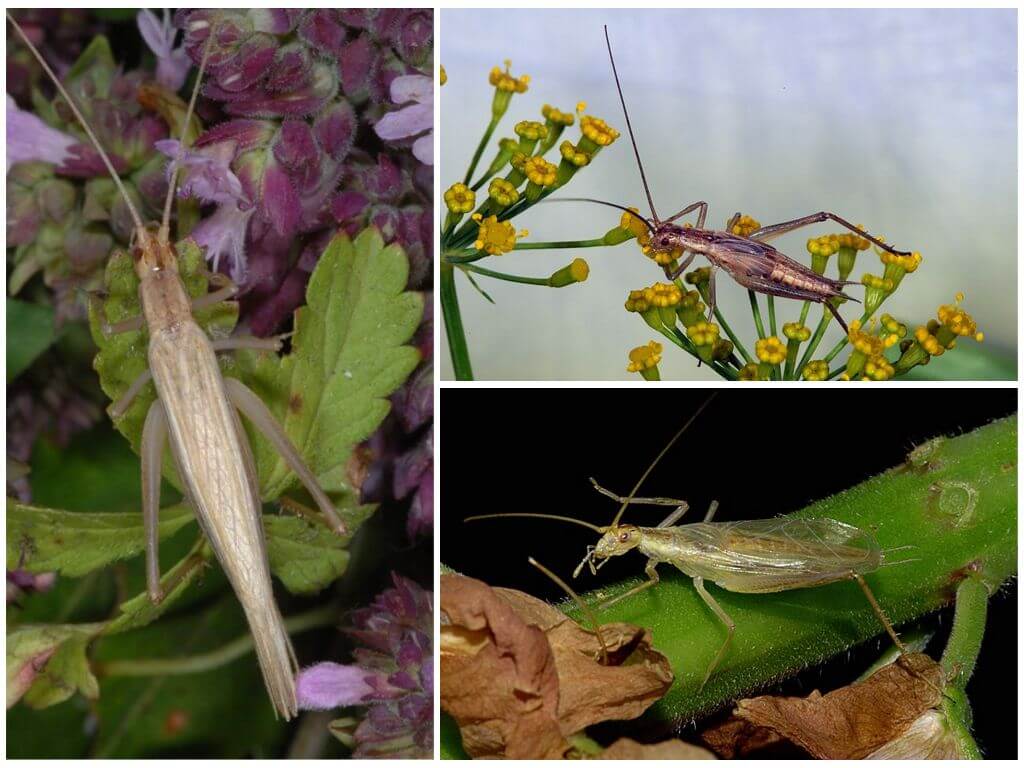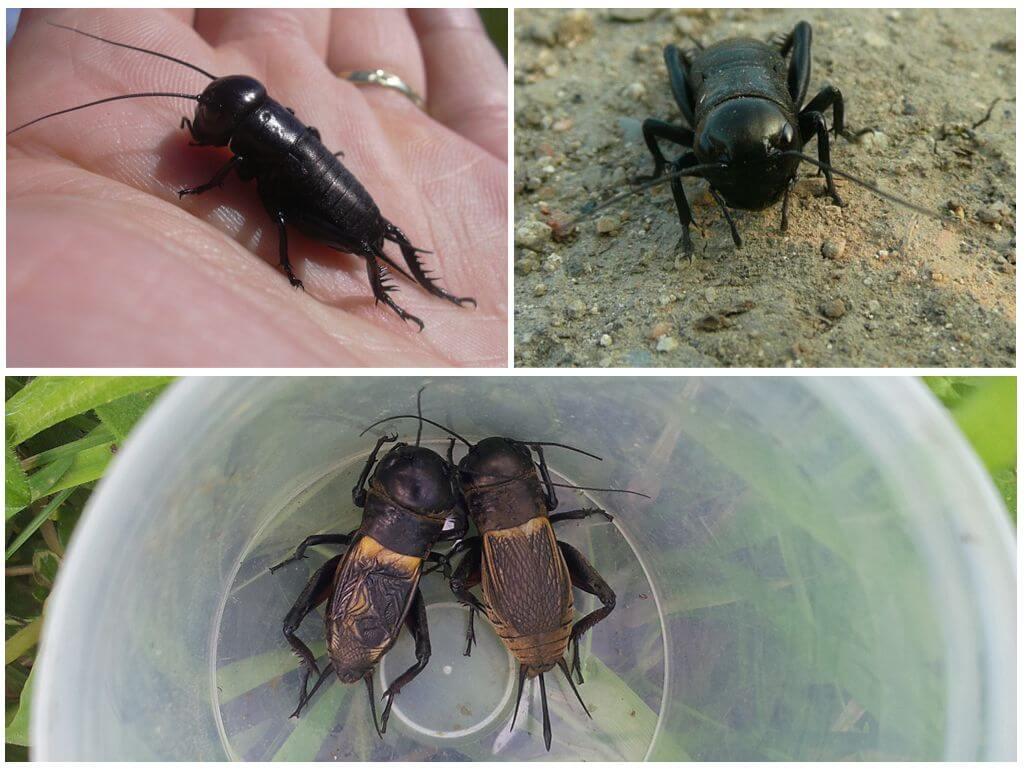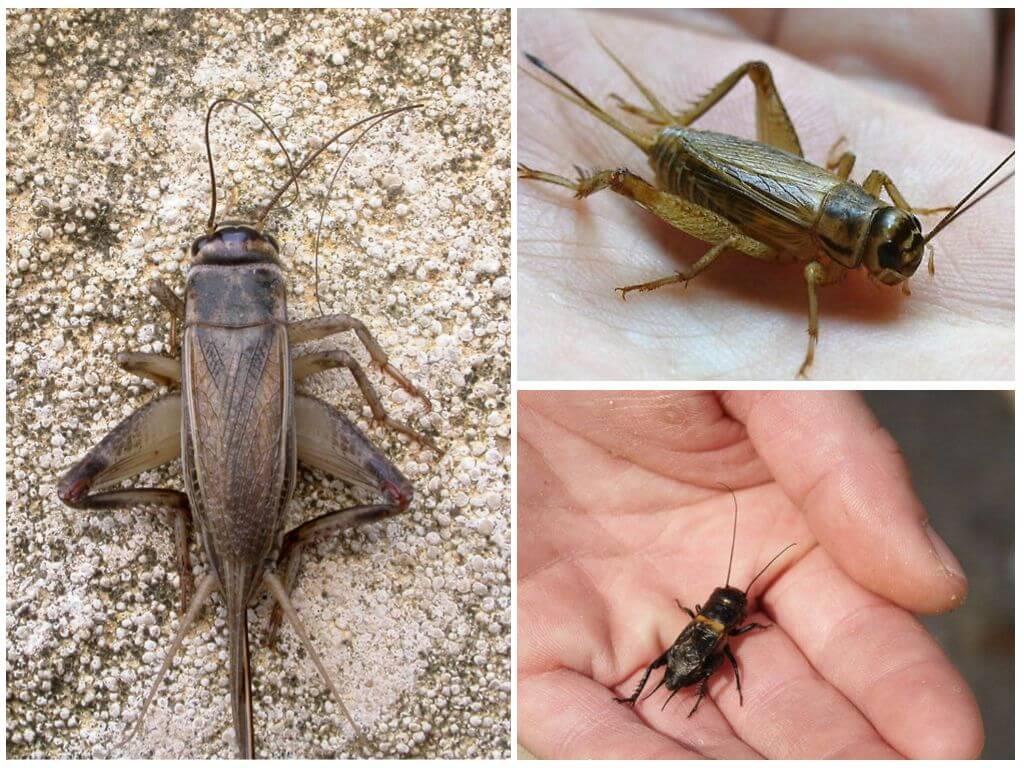- Cricket life
- Cricket
- Cricket Breeding
House cricket - synanthropic species, close relative cockroachsympathetic to many people. In fairness, it causes sympathy cricket singing, but his appearance can scare an unprepared person. The birthplace of the species is Eurasia. But together with the man, a home cricket has mastered the North American continent and a bit of Australia. In Australia, he confined himself only to the city of Adelaide, where the home dependent was originally brought. With a high degree of probability, the Australian climate prevented home cricket from spreading across the mainland.
Appearance
A homemade cricket resembles a massive medium-sized grasshopper with a straight back line.
- Ordinary grasshoppers have wings folded by a house. Crickets have three pairs of paws. The latter, like grasshoppers, is long and can push home cricket up. But he does not use his “catapult” to jump. This pair of paws is needed by the insect only to throw its body up, where it can spread its wings for flight.
- Crickets fly very well.
- An additional resemblance to a grasshopper is given to cricket by the mechanism for singing, also located on the hind legs.
- The head is large. On it is a pair of large faceted eyes.
- The mouth apparatus is gnawing.
A terrifying look to homemade crickets is given by long cerci located at the end of the abdomen. They are associated with stings. But homemade crickets are harmless insects. The female has a long (11-15 mm) ovipositor between the churches. The length of the body of a cricket is 1.5-2.5 cm. The color of the body of a cricket varies from yellowish to brown.
A photo of a house cricket, taken from above, gives an idea of how this companion of a person looks.
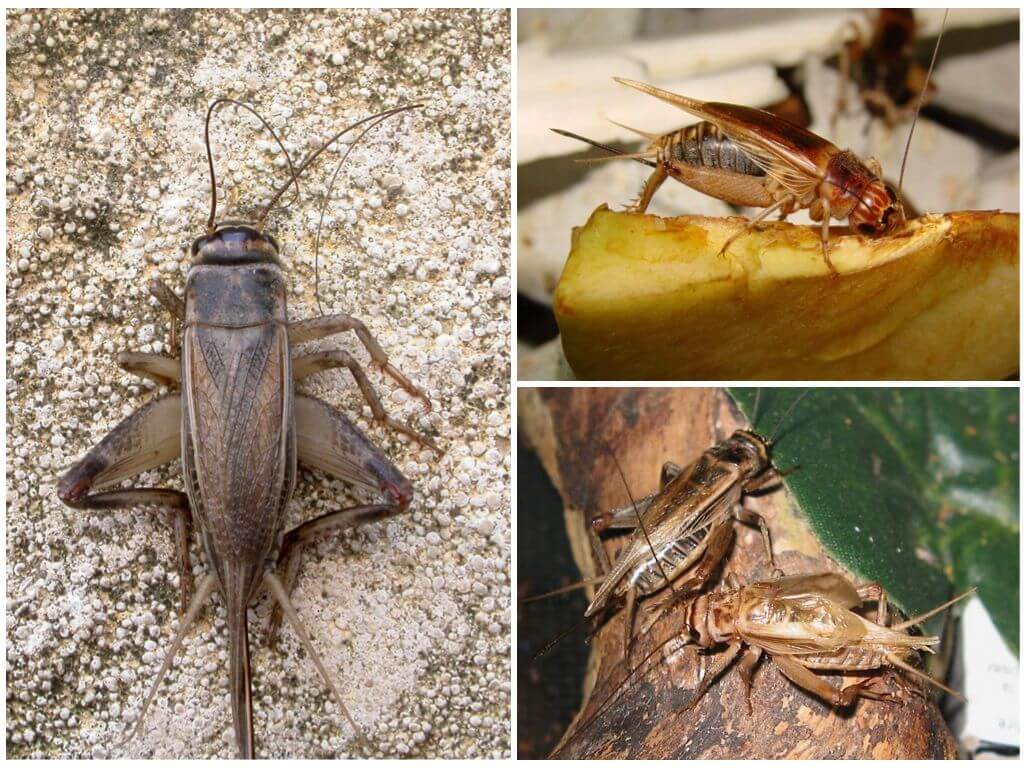
Lifestyle
Crickets are active at night. So males love beloved singing when caring for a female or scaring away rivals. In the afternoon they hide in secluded places. In the summer, insects prefer their natural habitat, hiding in moist crevices or minks.
On a note!
Domestic crickets cannot live and breed in dry areas.
Females lay eggs in a moist substrate in crevices of trees or stones. The number of eggs laid by one female per season depends on the ambient temperature. The usual amount is from 40 to 180, but at temperatures above 28 ° C the number of eggs laid can exceed 700.
For the winter, crickets move to houses and to warm, moist rooms, which include heated basements and lines of heating plants. At air temperatures above 21 ° C, the cricket in the house can continue its activity in the winter.
Interesting!
There is a sign that the appearance of a cricket in the house is fortunately. For this reason, some people specifically bring insects home from the street. But you won’t be able to enjoy singing for a long time, it interferes with sleep. Therefore people prefer get rid of crickets in the apartment. The life span of a domestic cricket in the adult stage is 3 months.
Diet
Nymphs and adults in nature eat plant foods. If a cricket lives in a house, he eats mostly liquid foods. But it can also eat rotting organics and even engage in cannibalism. Adults need protein supplements, so they catch small invertebrates and eat soft cadaveric tissues. They can catch and eat young relatives.
Human Relationship

A very difficult topic for a cricket. In Japan, it was customary to keep these insects at home in miniature cages. In Asia, they are specially bred for food, in North America they are used as bait. In Russia today, many lovers of exotic animals contain reptiles from those who eat crickets. Owners of these cold-blooded animals, in parallel with reptiles, usually breed crickets for pet food.
If a cricket suddenly starts up in the city center in a multi-storey building, you can be sure: he escaped from a lover of domestic reptiles. Much less often, such shoots are made by insect lovers because crickets also prefer to keep exotic ones.
On a note!
It’s okay if this insect has settled in the dwelling. Although it is related to cockroaches and can eat similar foods, there is no damage from it. The "night grasshopper" is neutral. It does no harm or good. Except for night singing, which can interfere with sleep.
How to get rid
If the cricket in the house turned out not to be fortunate, but to insomnia, and even managed to breed, you will have to get rid of uninvited guests. Here it will be appropriate to recall that biologically - these are cockroaches with similar requirements for habitat and food. You can poison them with chemicals, arrange sticky traps and try to expel crickets with folk remedies. But the first thing to do is to stop feeding them:
- The house should not have open bins, uncleaned crumbs and food debris on the table.
- It is necessary to monitor the taps so that water (watering hole) does not drip from them.
- If the house has a basement, you need to check if there are damp places there.
- All the cracks through which the insect can enter the house must be repaired. Hang a mosquito net on the windows.
For private houses and apartments on the first floors, a prerequisite is to trim the green spaces under the window. Owners of a private house need to place compost pits in the farthest corner of the plot, since the cricket lives in nature in just such humid places full of rotting organic matter.
Farm at home

There is also the opposite side of the coin. Fishermen and reptile lovers are often forced to independently breed these insects at home in terrariums. Not every reptile agrees to eat frozen dead food, and the cost of such food in a pet store can ruin rare animal lovers.
On a note!
These insects do not have seasonal activity, therefore, under favorable conditions, cricket at home is able to multiply year-round. This greatly helps the owners of terrariums.
The optimal combination of insects is 1 male per 5 females. With an overabundance of males, fierce fights arise between them, which leads to injuries among producers. The male who has lost the elytra is unable to make mating trills and becomes unsuitable for reproduction.
Females are provided with a moist substrate for laying eggs. Tanks with a substrate are covered with a mesh with a mesh size of 2 mm or more. The net is needed so that the insects can not dig out and eat eggs. In favorable domestic conditions, the female lays 200-500 eggs, similar in shape to a banana.
Important!
The substrate should not be too dry or dense. When trying to lay eggs in dense or dry soil, the females damage the oviduct and become unable to reproduce.
The humidity of the substrate must be carefully monitored. When dried, the white eggs dry out and become transparent. This means the death of masonry. In the case of a dry substrate, the female may try to lay eggs in the drinker. In this case, the masonry will also die.
Domestic cricket refers to insects with an incomplete transformation cycle. In its development there are only three stages:
- egg;
- nymph;
- imago.
The pupal stage falls out. The nymph is very similar to an adult, but it does not have wings. The nymph has 9–11 stages of development. That is, shedding young cricket will be 9-11 times.
At home, the development of eggs lasts 10 days, so the containers with the substrate must be replaced every decade. Juveniles emerging from eggs must be fed with soft protein foods, placing food in a container with low sides. You also need to provide young domestic crickets with water. For this wick drinkers are suitable.
Depending on the room temperature, the development of domestic crickets lasts 40-60 or more days. After completion of the development cycle, they are suitable for feeding domestic reptiles.
